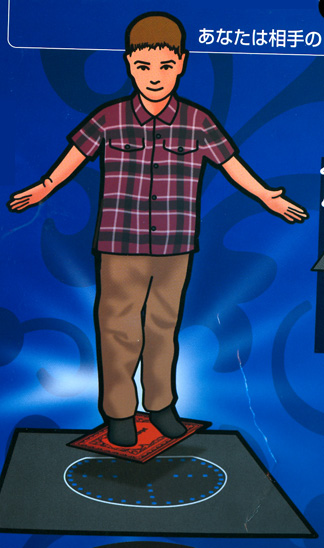
|
Note ye ed's email address: stevebryant99@gmail.com. |


|
November 2011 Happy Thanksgiving. This issue is going up a little earlier and a little briefer this month because I can't wait to rave about the two products under review. First is a delightful tale of the interplay between magic tricks and mathematics, from Persi Diaconis and Ron Graham. You'll learn more about math and card tricks than you ever knew there was to know. And then, representing genius of a different sort, Tenyo has released Lubor Fiedler's latest invention, a Flying Carpet that allows you to hover off the floor, anywhere, any time. Magic rarely gets this cool. And while you're compiling your Christmas wish list, be alerted that Stephen Minch/Hermetic Press is soon to release Tom Stone's Maelstrom (277-page hardback) and David Acer's More Power to You (190-page hardback). You save $11 and get free shipping if you order by November 30. |
|
| |
| |
|
|
|
YOU WILL BELIEVE A MAN CAN FLY -- And that man is you! Thanks to the genius of Lubor Fiedler and the guys at Tenyo, there is now a practical close-up magic way for you to float inches off the ground. First, your spectator dons a pair of magic glasses, like the X-Ray Spex we featured last month, but this time a pair "you ordered from a rare comic you picked up at the last Comic-con; what a surprise when a package ordered off a fifty-year-old comic actually arrived." Or whatever you want to tell them. The spectator looks on in amazement as your small magic carpet hovers inches above a jet black launch pad. Imagine how more amazed she will be as you then step up onto the flying carpet and float in midair. And then, while still hovering, you reach down and move the launch pad around, proving that there is no connection. At the end, everything can be examined. This is the most amazing product Lubor and Tenyo have put out. Although best performed for only one or two spectators at a time (two pairs of magic glasses are provided), the effect is just stunning. Around $60. I purchased mine from SEOMAGIC-USA.com. Excellent service. (P.S. It's not black art, and it's nothing like the Balducci levitation. It's an amazing new idea.) |
 Be sure to file a flight plan. |
|
Aloha, Steve Jobs.
Little Egypt Magic is the erratically updated web site of Steve Bryant, spawned (the site, not Steve) by a former internet magazine known as The Little Egypt Gazette/for magicians only. Steve Bryant is an obscure magician and writer who generates this site from an iMac in Bloomington, Indiana. He frequently journeys to and performs magic in Little Egypt, the local name for extreme southern Illinois, where the towns bear such names as Cairo, Thebes, and Karnak. Past issues of this web site: Index to Past Issues Notice: Any limited use of copyrighted images or quoted text is considered fair use, usually to review whatever product or event that is under discussion. If you object to use of any material, please get in touch and it will be cheerfully removed. |
A JSB Creations product
Copyright© 2011 by Steve Bryant